It’s a scene familiar to cat owners worldwide: you walk into a room to find your feline friend staring directly at you while deliberately pushing a glass, vase, or cherished memento off the edge of a table. The sound of shattering follows, yet your cat appears utterly unremorseful – perhaps even satisfied. This seemingly destructive behavior has spawned countless internet memes and videos, but what drives our beloved companions to engage in this peculiar activity? Is it pure mischief, calculated revenge, or something more deeply rooted in their evolutionary biology? In this comprehensive exploration, we’ll uncover the fascinating truth behind why cats knock things off tables, examining both scientific explanations and behavioral insights that reveal the complex motivations behind this quintessentially feline habit.
The Evolutionary Roots of Object Pushing

To understand why domestic cats engage in table-clearing behavior, we must first look to their evolutionary history. Cats are descendants of solitary hunters whose survival depended on their ability to detect, investigate, and manipulate objects in their environment. Wild felids routinely use their paws to test potential prey, investigating whether objects are alive or dead, dangerous or harmless. This innate investigative behavior persists in our domestic companions despite thousands of years of domestication.
Researchers specializing in feline behavior note that this pawing action mimics how cats would test the vitality of prey in the wild. By batting at objects, cats are essentially engaging in predatory behavior sequences that remain hardwired in their DNA. When your cat knocks items off elevated surfaces, they’re partially expressing these deeply embedded hunting instincts, examining whether these objects might react like prey when touched or moved. This evolutionary foundation provides crucial context for understanding behaviors that might otherwise seem deliberately destructive or spiteful.
The Science of Feline Curiosity
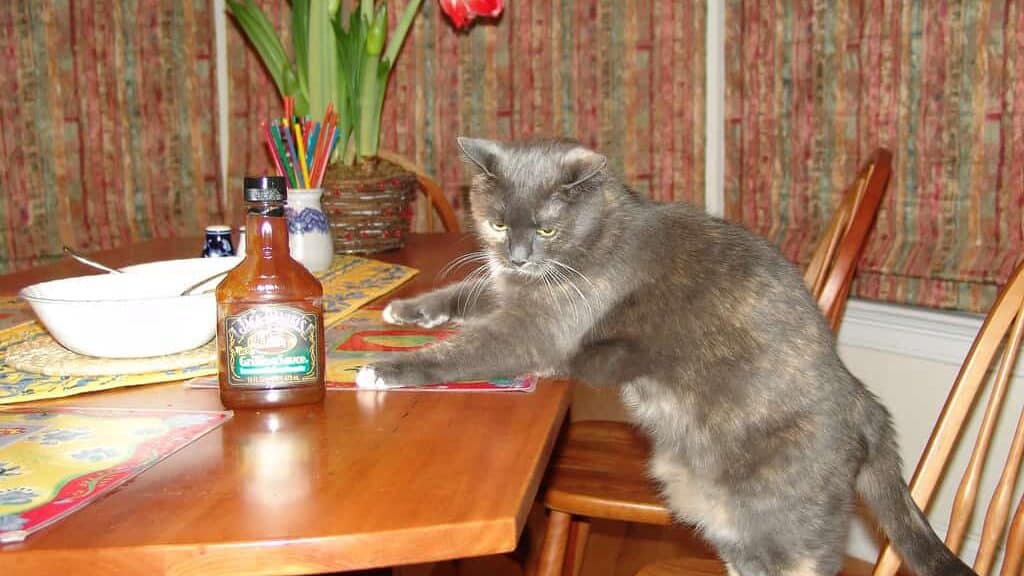
Cats possess an extraordinary sense of curiosity that drives much of their behavior, including their tendency to knock objects off surfaces. This curiosity isn’t random but serves an important biological purpose. Feline neurologists have found that cats’ brains are wired to be particularly responsive to movement, which stimulates their predatory instincts and provides essential mental enrichment. When a cat pushes an object and watches it fall, they’re receiving valuable sensory feedback about how things in their environment behave under different conditions.
Studies of feline cognition reveal that cats learn through observation and experimentation. Each time your cat pushes something off a table, they’re conducting a small experiment that helps them understand physical properties like gravity, momentum, and cause-and-effect relationships. This experimentation satisfies their innate need to understand their surroundings and contributes to their environmental mastery – a critical aspect of feline psychological well-being. Their curiosity quite literally helps them make sense of their world through direct interaction.
Attention-Seeking Behavior Explained
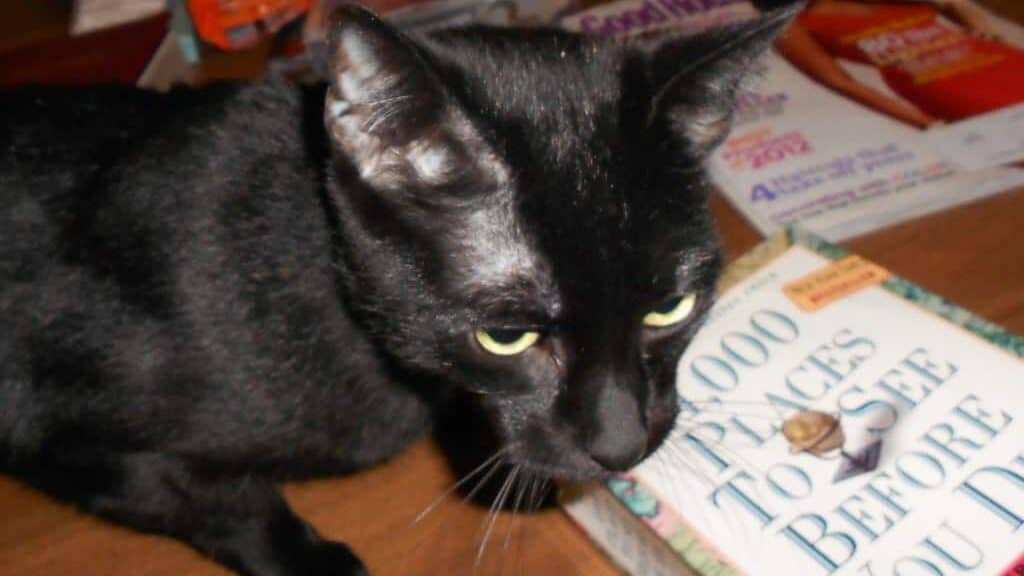
One of the most straightforward explanations for why cats knock things off tables is that it reliably gets a reaction from their human companions. Cats are incredibly adept at recognizing patterns of cause and effect, particularly when it comes to soliciting attention. If knocking something off a table prompted you to rush into the room, make eye contact, speak to them (even if negatively), or otherwise engage with them once, they’ve learned a powerful lesson about how to get your attention when desired.
Animal behaviorists have documented that cats quickly learn which actions generate the most dramatic human responses. The loud noise created by objects falling and breaking is particularly effective at eliciting immediate attention. For a cat feeling ignored or seeking interaction, this behavior becomes a reliable strategy. Furthermore, if you respond by picking up the knocked-over items while your cat watches, you’ve inadvertently reinforced the behavior by demonstrating that their actions successfully controlled your behavior. This creates a cycle that can be challenging to break without understanding the underlying attention-seeking motivation.
Play and Predatory Instincts

Cats are natural predators, and play behavior in domestic cats frequently mimics hunting sequences. When cats bat at objects on tables, they’re often engaging in the same motions they would use to catch small prey. The movement of an object sliding across a surface and then falling mimics the escape attempt of prey, triggering the cat’s instinct to pounce, bat, and chase. This is particularly true for objects that move unpredictably when batted, such as pens that roll or lightweight items that slide easily.
Research on feline play behavior shows that even well-fed cats maintain strong predatory drives that need expression through play and “hunting” activities. Without appropriate outlets for these instincts, cats may target household objects as substitutes. The satisfaction they derive from successfully knocking objects off tables partially comes from triggering these instinctual predatory sequences. This explains why many cats appear fascinated by watching objects fall, tracking them with the same intense focus they would use when hunting live prey in the wild.
Territorial Marking and Ownership
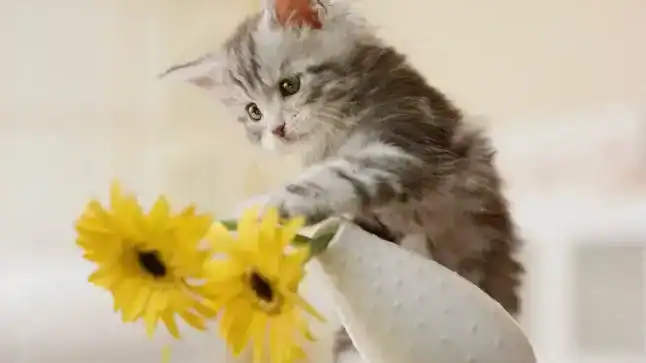
Cats are territorial creatures with complex systems for establishing ownership of spaces and objects. When a cat encounters something unfamiliar on “their” territory (such as your table or countertop), they may interact with it as part of their territorial assessment process. By pushing objects around or off surfaces, cats can be expressing a form of territorial control, essentially deciding what belongs in their space and what doesn’t. This behavior becomes particularly common when new items appear in the home or when the cat’s environment has recently changed.
Feline behaviorists note that cats possess scent glands in their paws, and touching objects serves as a way to mark them with their scent. By interacting physically with objects on elevated surfaces, cats may be simultaneously investigating these items and subtly marking them as part of their territory. This explains why newly introduced objects often receive the most attention from cats and why cats may be particularly interested in items that carry unfamiliar scents. Their table-clearing behaviors partly represent an assertion of ownership over their living space.
Boredom and Environmental Enrichment
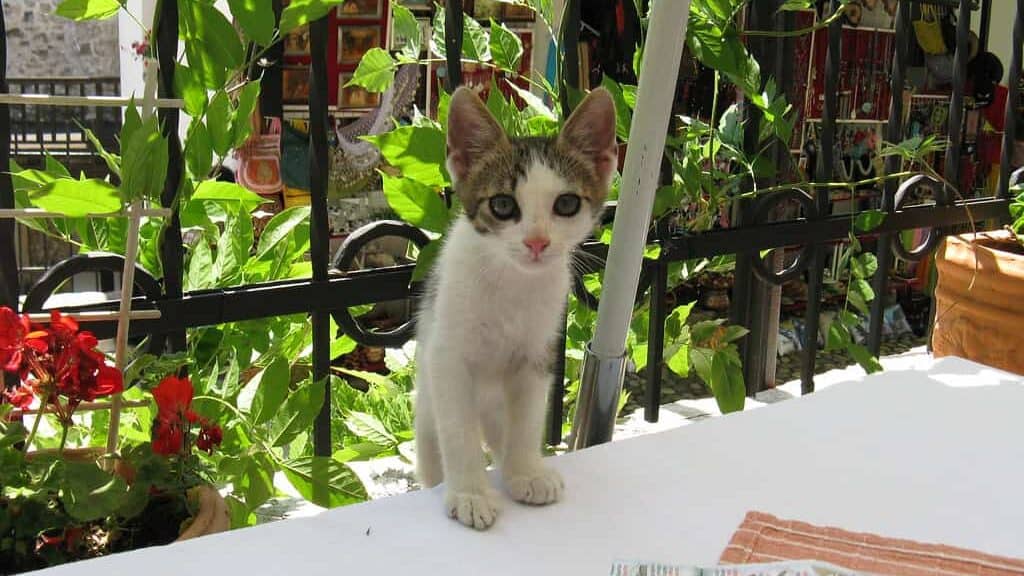
Domestic cats, particularly those kept exclusively indoors, require substantial environmental stimulation to prevent boredom. Knocking objects off tables often increases in frequency when cats lack adequate environmental enrichment or sufficient interactive playtime with their human companions. In the absence of appropriate stimulation, cats create their own entertainment, and watching objects fall provides a form of self-generated enrichment that temporarily relieves boredom. This behavior becomes a form of environmental manipulation that gives them some control over their surroundings.
Studies examining environmental enrichment for captive felines, from housecats to zoo-dwelling big cats, consistently show that animals deprived of adequate stimulation develop more problematic behaviors. Providing appropriate alternatives for exploration and play – such as puzzle feeders, rotating toys, climbing structures, and daily interactive play sessions – can significantly reduce destructive behaviors born of boredom. Many cat owners report dramatic reductions in table-clearing incidents after implementing more robust environmental enrichment programs for their feline companions.
Surface Preference and Elevated Spaces
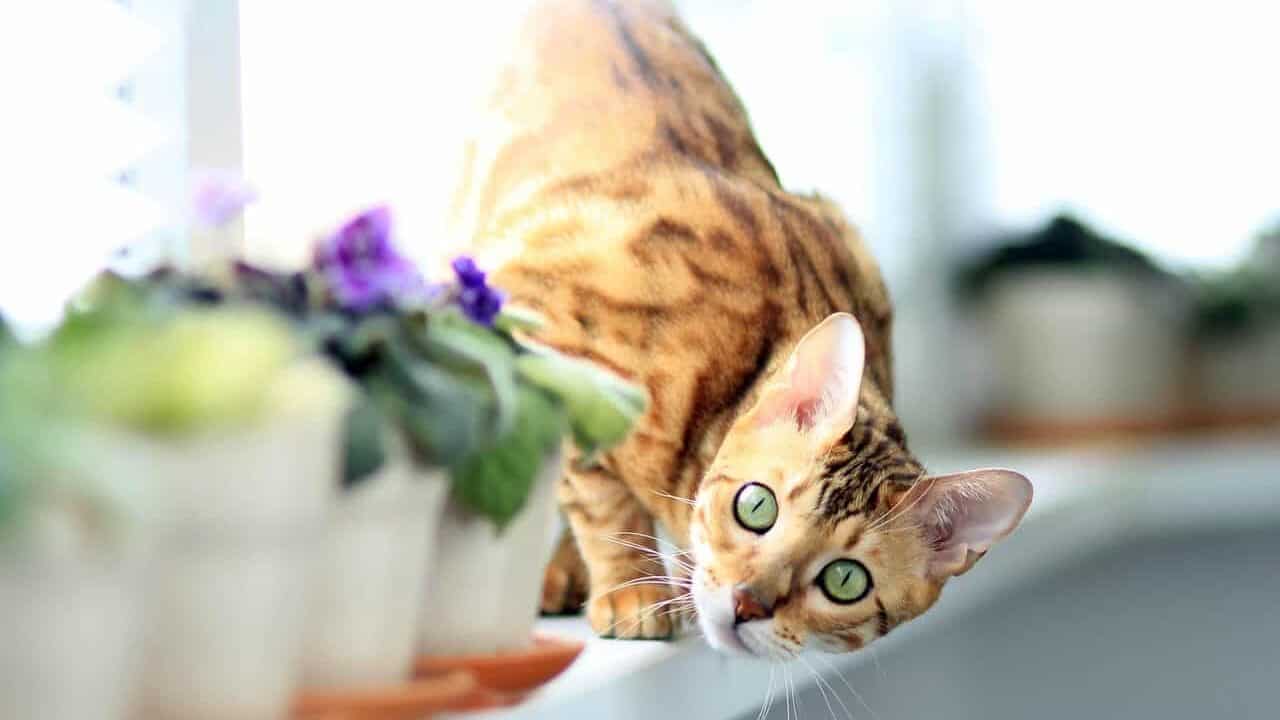
Cats naturally prefer elevated positions, a preference rooted in their evolutionary history where height provided safety from predators and advantageous hunting perspectives. Tables, countertops, and shelves appeal to cats precisely because they offer these elevated vantage points. When cats knock objects off these surfaces, they may be partially motivated by a desire to create unobstructed spaces where they can comfortably perch. The behavior effectively clears their preferred resting spots of obstacles, creating more usable space for themselves.
Research into feline spatial preferences confirms that cats value vertical territory as much as horizontal space. In multi-cat households, elevated surfaces become particularly important resources that cats may compete to control. By knocking objects off these valued surfaces, cats may be expressing ownership of these important territories. This explains why providing dedicated cat shelves and perches often reduces table-clearing behavior – it gives cats appropriate elevated spaces that are exclusively theirs, reducing their need to claim human surfaces for themselves.
Night-Time Table Clearing: A Special Case
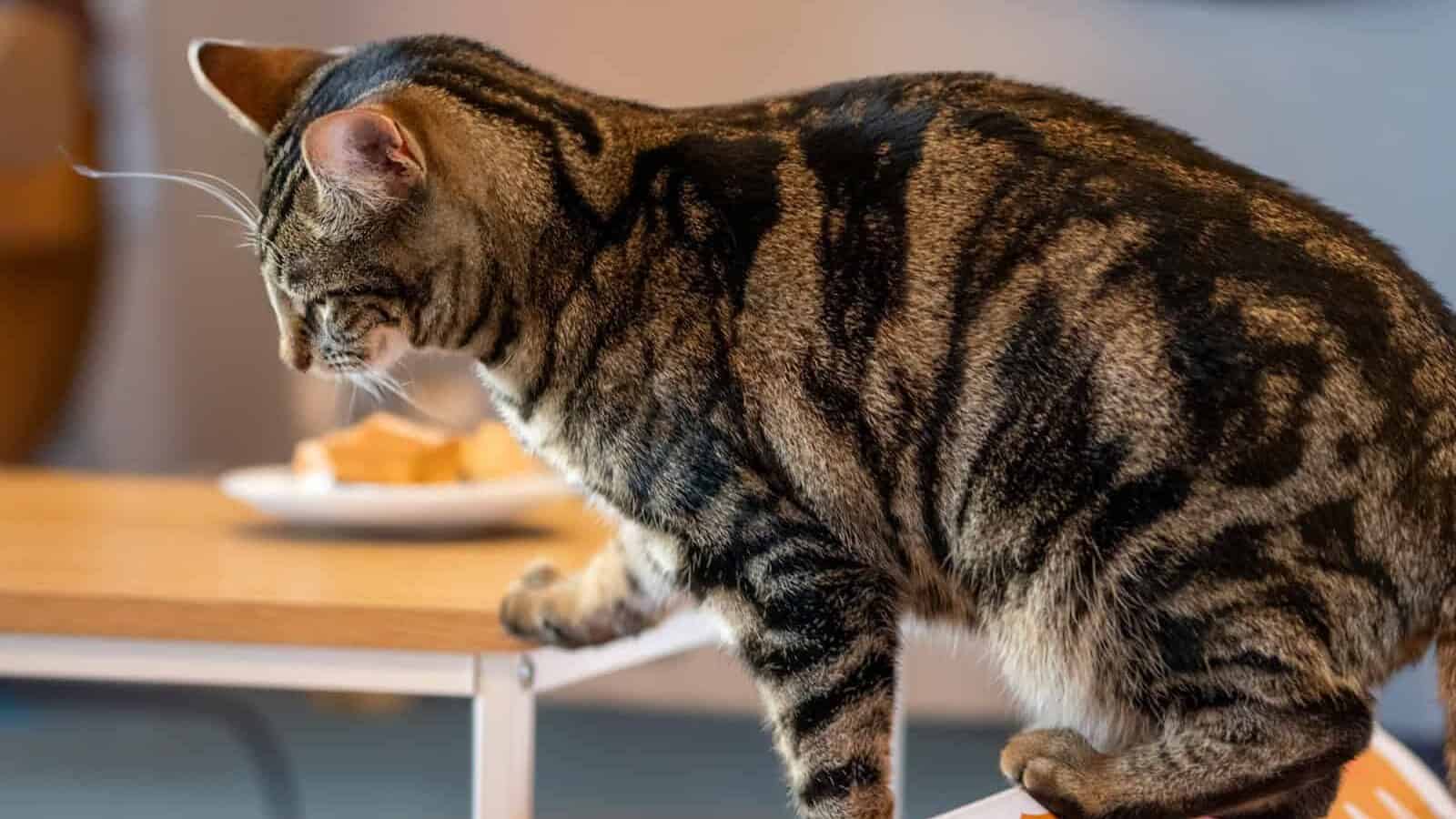
Many cat owners report that table-clearing incidents frequently occur at night or early morning hours, leading to rude awakenings. This timing isn’t coincidental but reflects cats’ natural crepuscular activity patterns, with peak activity occurring around dawn and dusk. When cats knock items off tables during these hours, they’re often combining their natural activity cycle with attention-seeking behavior, effectively creating a strategy to rouse sleeping humans who might otherwise ignore them during their most active periods.
Nocturnal table-clearing also relates to cats’ hunting instincts, as their wild ancestors would be most actively hunting during these low-light periods. Indoor cats with excess energy and no appropriate outlet may redirect these nighttime hunting drives toward household objects. This behavior pattern often intensifies in cats who receive insufficient stimulation during the day or who are left alone for extended periods. Creating a pre-bedtime play routine that mimics hunting can help exhaust some of this energy, potentially reducing nighttime destructive behaviors.
Age and Developmental Factors
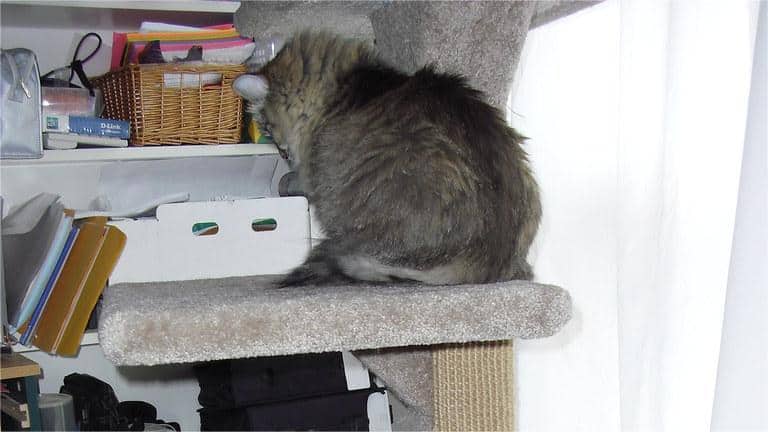
The frequency and intensity of table-clearing behaviors often correlate with a cat’s age and developmental stage. Kittens and young adult cats typically engage in this behavior more frequently as part of their developmental exploration and play. During these formative periods, young cats are learning about their physical capabilities and how objects in their environment respond to interaction. This experimentation helps develop crucial motor skills and spatial awareness that would benefit survival in the wild.
Feline developmental research shows that most cats naturally reduce certain play behaviors as they mature, typically becoming less destructively playful after reaching social maturity around 2-4 years of age. However, this age-related moderation varies significantly between individuals and breeds, with some cats maintaining playful, object-batting behaviors well into adulthood. Cats with higher energy levels, such as Oriental breeds like Siamese and Bengals, often continue these behaviors longer than more sedentary breeds. Understanding these developmental patterns helps explain why some cats seem to “outgrow” table-clearing while others continue the behavior throughout their lives.
Training and Behavior Modification
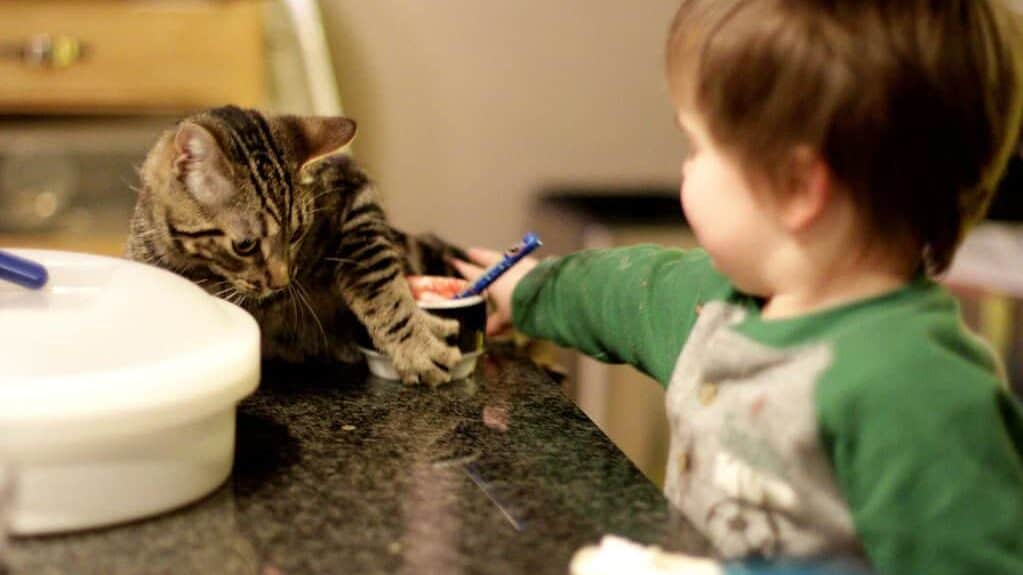
While table-clearing behavior has deep biological roots, it can be modified through appropriate training and environmental management. Contrary to popular belief, cats are trainable, though they respond to different techniques than dogs. Successful intervention typically combines negative punishment (removing something desirable when the behavior occurs) with positive reinforcement (rewarding alternative behaviors). For instance, using double-sided tape or aluminum foil on table edges creates an unpleasant tactile experience that discourages cats from jumping up, while simultaneously providing appropriate climbing structures and rewarding their use.
Behaviorists emphasize that punishment-based approaches alone rarely succeed with cats and may damage the human-animal bond. Instead, addressing the underlying motivation proves more effective. If attention-seeking drives the behavior, implementing scheduled play sessions and gradually teaching the cat that knocking objects doesn’t result in attention can help. For cats motivated by play needs, providing appropriate interactive toys and daily play sessions that mimic hunting sequences can redirect their energy. The most successful intervention programs recognize that table-clearing serves a purpose for the cat and focuses on meeting those needs in more appropriate ways.
When Table Clearing Indicates Health Issues
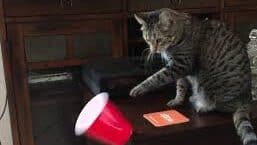
While most instances of knocking objects off tables reflect normal feline behavior, sudden increases in this activity or its emergence in previously well-behaved adult cats may occasionally signal underlying health concerns. Conditions such as hyperthyroidism, which increases activity levels and restlessness, or cognitive dysfunction in senior cats, which can alter established behavior patterns, sometimes manifest through increased destructive behaviors. Sensory changes, including developing vision problems, might also cause cats to interact differently with objects, potentially increasing batting behaviors as they attempt to better perceive items with compromised vision.
Veterinary behaviorists recommend consulting with a veterinarian if a cat suddenly develops or intensifies table-clearing behaviors, particularly if accompanied by other behavioral or physical changes. A thorough health examination can rule out medical causes before addressing the behavior as purely psychological. This is especially important for senior cats, as cognitive dysfunction syndrome affects approximately 50% of cats over 15 years old and often manifests through changes in previously stable behavior patterns. Proper diagnosis ensures that any intervention addresses the true underlying cause rather than just the symptomatic behavior.
The tendency of cats to knock items off elevated surfaces represents a fascinating intersection of evolutionary history, cognitive development, environmental needs, and the unique human-feline relationship. Far from being simply destructive or spiteful, this behavior reveals the complex inner workings of the feline mind and their specific environmental needs. By understanding that cats knock things off tables due to a combination of predatory instincts, curiosity, attention-seeking, and enrichment needs, we can develop more empathy for this natural behavior while also creating strategies to protect our valuables.
Ultimately, successful cohabitation with cats requires accepting their fundamental nature while gently guiding them toward more appropriate expressions of their natural behaviors. By providing suitable alternatives for play, exploration, climbing, and attention, we can reduce problematic behaviors while enhancing our cats’ well-being. The next time your cat looks you directly in the eye while slowly pushing your glass toward the table’s edge, remember that they’re not being malicious – they’re simply being cats, expressing behaviors deeply rooted in their evolutionary heritage and responding to their current environmental circumstances in the ways nature has equipped them to do.
- What Happens to Stranded Pets When Disaster Strikes? - August 25, 2025
- The Animal With the Most Teeth - August 25, 2025
- 15 Weird Things Your Dog Actually Understands - August 25, 2025

